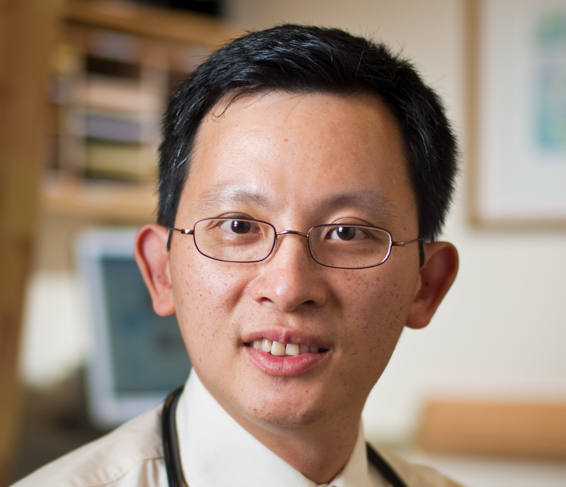Both allogeneic and autologous stem cell transplants involve treating a patient with chemotherapy followed by an infusion of blood-forming stem cells, with a goal of curing the cancer or extending the time before the disease relapses. In adults, transplants are used to treat a range of blood-related cancers, myelodysplastic syndromes, and non-malignant blood disorders.
Autologous transplants use a patient’s own stem cells. The cells are collected before the patient receives high doses of chemotherapy, which kills cancer cells that survive lower doses. The stem cells are then reinfused into the body to create new, healthy blood cells and platelets.
Allogeneic transplants use stem cells from a closely matched donor, who may be related to the patient or be unrelated. Unrelated donors are identified through a registry such as the Be The Match® registry of the National Marrow Donor Program.
The choice of an autologous or allogeneic transplant is based on the type of disease an individual has. Autologous transplants are used for certain cancers that respond well to chemotherapy, while allogeneic transplants are generally reserved for certain cancers that are less responsive to chemotherapy but are more vulnerable to attack from the new immune system generated by the donor’s stem cells.
What are autologous transplants?
In adults, autologous transplants are used to treat:
- Multiple myeloma, in which high doses of chemotherapy followed by transplant can slow the relapse of the disease and extend patients’ survival. Transplant is generally available to patients whose myeloma has plateaued after initial treatment and who are fit enough to tolerate high-dose chemotherapy.
- Lymphoma, including Hodgkin lymphoma as well as non-Hodgkin lymphoma. Patients are first treated with standard chemotherapy. Those who are not cured – who relapse after treatment – are eligible for a transplant.
- Testicular cancer. Most younger patients with this disease are cured by chemotherapy alone. Those who relapse, or whose cancer is resistant to standard chemotherapy, are treated with high-dose chemotherapy followed by an autologous transplant.
What are allogeneic transplants?
Allogeneic transplants work differently from autologous transplants. In autologous transplants, large doses of chemotherapy are used to kill tumor cells. The high doses also destroy the blood-forming cells of the bone marrow, so patients then receive a reinfusion of their stem cells, which travel to the bones and regenerate the marrow. In allogeneic transplants, by contrast, doctors may use high or reduced doses of chemotherapy or total body irradiation, but the treatment must suppress the recipient’s immune system sufficiently to prevent the donor cells from being rejected. The donor stem cells settle into the recipient’s marrow and begin producing white blood cells that form a healthy new immune system that, hopefully, will fight off the cancer
In adults, allogeneic transplants are used in:
- Acute leukemias (including acute myeloid leukemia and acute lymphoblastic leukemia), myelodysplastic syndromes, chronic myelogenous leukemia, and chronic myeloproliferative conditions such as myelofibrosis, as well as chronic lymphocytic leukemia, follicular lymphoma, mantle cell lymphoma, and Hodgkin lymphoma. In these diseases, the anti-cancer effect — also known as the graft-vs.-leukemia effect — of the donated stem cells may be very powerful. Depending on patients’ age and medical conditions, patients may receive moderate or “reduced” doses of chemotherapy, followed by infusions of blood stem cells or bone marrow from a fully or closely matched donor. The resulting white blood cells, hopefully, will generate a new immune system for the patient that is able to eradicate the cancer. Patients often require immune-suppressing drugs in the first several months after transplant to prevent the new donor cells from launching a harmful attack on the recipient’s normal tissue, a condition known as graft-vs.-host disease.
- Non-cancerous blood diseases such as bone marrow failure, aplastic anemia, and sickle-cell anemia.
Highly experienced experts in the Adult Stem Cell Transplantation Program at Dana-Farber Brigham Cancer Center work closely with patients and families throughout all stages of their transplants to provide fully coordinated, personalized care. Learn more about the world-class care offered to patients, from diagnosis through long-term follow-up and specialized survivorship support
About the Medical Reviewer

Dr. Ho received his MD from Harvard Medical School in 1996. He completed postgraduate training at Brigham & Women's Hospital, followed by a fellowship at DFCI. He joined DFCI in 2002, where he is a member of the Hematologic Malignancies staff.
